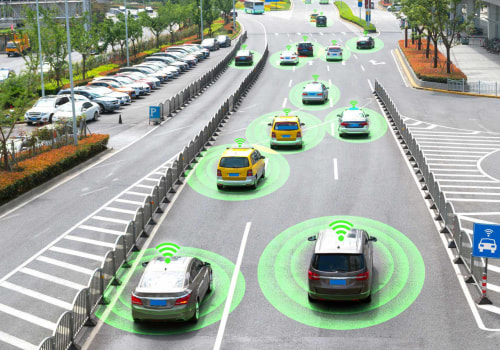As the electric vehicle industry continues to grow, so too does the need for reliable and cost-effective charging networks and fees. With the rise of electric vehicles, it is increasingly important to understand the fees associated with charging electric vehicles, as well as the networks that provide power to these vehicles. This article will explore the fees and networks associated with electric vehicle charging, discussing their advantages, limitations, and implications for the future of electric vehicles. The first step when considering an electric vehicle is understanding the different types of charging networks available. The two main networks are public charging stations, which are typically found in parking lots or garages, and home charging stations, which can be installed in your home or garage.
Public charging stations usually require you to pay a fee per charge, while home charging stations allow you to charge your car for free. Next, you need to understand the different fees associated with electric vehicle charging. For public charging stations, the cost per charge varies depending on the network and the type of charger being used. Generally speaking, Level 1 chargers (which provide a slower charge) are cheaper than Level 2 or DC fast chargers.
Additionally, some networks offer monthly or annual subscription plans that can save you money over time. Finally, it’s important to understand the various incentives available for electric vehicle owners. Many governments offer tax credits or other incentives to encourage people to switch to electric vehicles. Additionally, some utilities offer special rates for electric vehicle owners, allowing them to charge their cars at a discounted rate.
Overall, electric vehicles can be a great option for those looking for a more sustainable and eco-friendly way to get around. With the right knowledge and planning, you can maximize your savings and make the switch to electric vehicles even easier.
Types of Electric Vehicle Charging Networks
Electric vehicle charging networks can be broken down into two main categories: public charging stations and home charging stations. Public charging stations are charging points that are available for use by the general public. These can be found in places such as shopping malls, parking garages, and other public places.Home charging stations are private charging points that are installed in one's home. Both types of charging networks have their advantages and disadvantages.
Public Charging Stations
: Public charging stations offer convenience and accessibility for electric vehicle owners. They are typically faster than home charging stations, providing up to 150 kilowatts of power that can charge an electric vehicle in as little as 30 minutes. However, public charging stations often have higher fees associated with them, making them less cost-effective than home charging stations.Additionally, they may not always be available when needed due to high demand.
Home Charging Stations
: Home charging stations provide a more cost-effective option for electric vehicle owners. They typically require less time to charge an electric vehicle than public charging stations, and they are usually cheaper to use. However, they can be inconvenient if you need to charge your car outside of your home. Additionally, it may be difficult to find a certified electrician to install a home charging station.Incentives for Electric Vehicle Owners
Electric vehicle owners have access to a range of incentives that can make owning an electric vehicle more affordable.These incentives include tax credits, utility discounts, and other state and local initiatives.
Tax Credits
The federal government offers a tax credit of up to $7,500 for the purchase of a new electric vehicle. This credit is applied directly against the taxes due on your annual tax return and can be applied to all new electric vehicles purchased in or after 2010. The amount of the credit varies depending on the size of the vehicle and its battery capacity.Utility Discounts
Many states offer utility discounts to electric vehicle owners. These discounts can range from reduced rates on electricity used to charge an electric vehicle to other incentives such as free charging at public charging stations.Utility discounts vary by state and utility, so it's important to research what incentives are available in your area.
State and Local Initiatives
In addition to federal incentives, many states and local governments offer their own incentives for electric vehicles. These can include tax credits, rebates, and other incentives such as free parking at public parking lots or reduced tolls on highways. Again, these incentives vary by state and locality, so it's important to research what incentives are available in your area.Electric Vehicle Charging Fees
Electric vehicles offer an eco-friendly and efficient form of transportation, but the cost of charging can be a major factor to consider. Depending on the type of charger and the network you use, electric vehicle charging fees can vary significantly.Level 1 and Level 2 ChargersMost electric vehicles are charged using either Level 1 or Level 2 chargers. Level 1 chargers use a standard 120-volt outlet and are typically used for overnight charging in a garage or parking lot. Level 2 chargers use a 240-volt outlet and can charge an electric vehicle in a much shorter amount of time.
Subscription Plans
Some networks also offer subscription plans that allow users to pay a flat fee for access to their network of charging stations.These plans vary in cost and may include additional benefits such as discounts on charging fees or access to special parking spots.
Pay-As-You-Go
For those who do not have a subscription plan, most networks offer a pay-as-you-go model. This allows users to pay for each charging session based on the amount of electricity used. Depending on the network, the cost per kWh may vary from as low as $0.05 to as high as $0.50.Electric vehicles are an increasingly popular choice for those looking to reduce their carbon footprint and save money on transportation costs. With the various types of electric vehicle charging networks, fees and incentives available, it is important to understand each of these factors in order to make an informed decision. By doing so, you can determine if an electric vehicle is the right option for you.
Electric vehicle charging fees
, networks, and incentives can all help make the decision to choose an electric vehicle easier.Additionally, understanding these factors can help you save money and reduce your environmental impact in the long run.











Leave Message